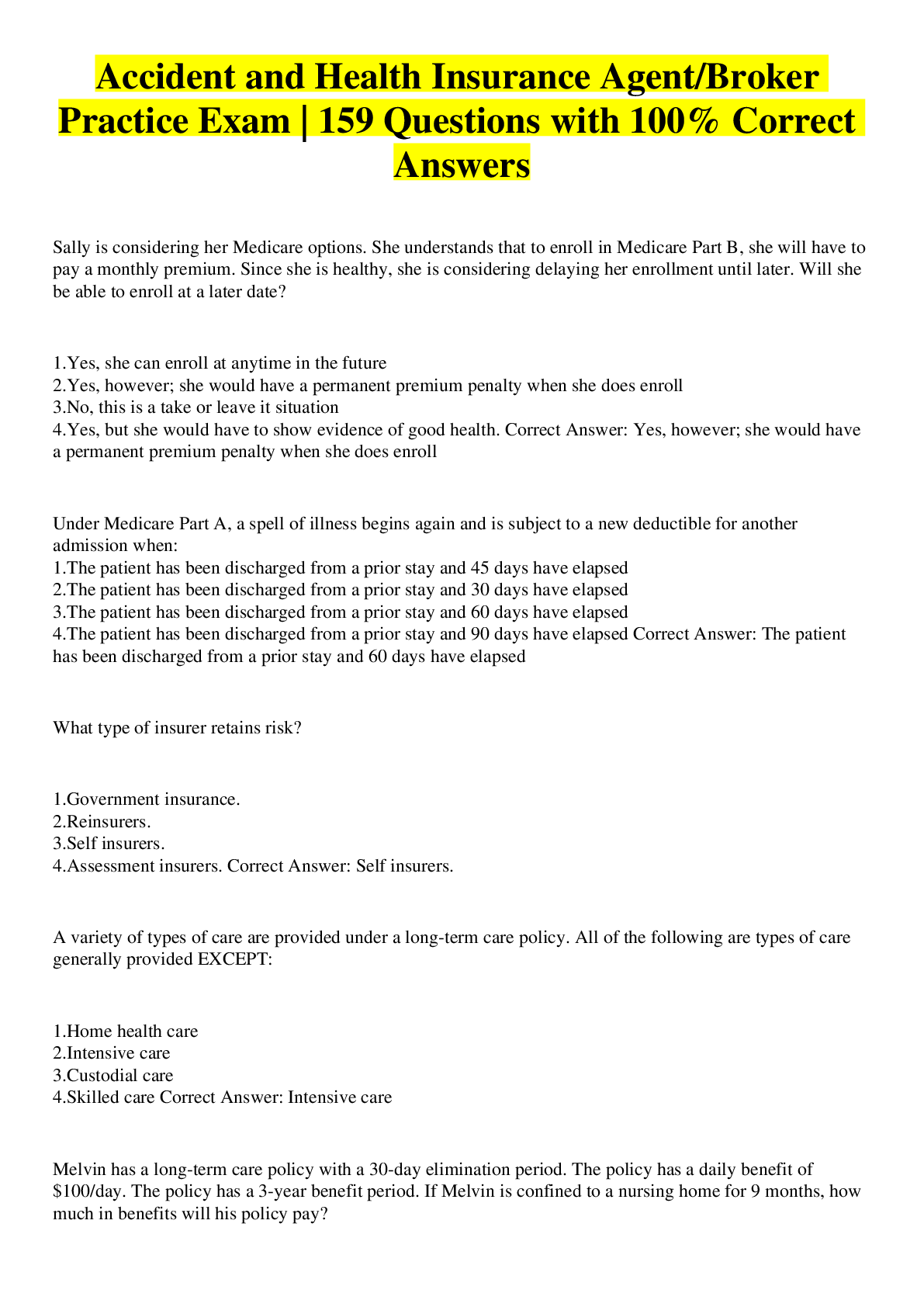Biology > QUESTIONS & ANSWERS > 2022 NRP PRACTICE EXAM QUESTIONS AND ANSWERS ALL SOLVED SOLUTION. (All)
2022 NRP PRACTICE EXAM QUESTIONS AND ANSWERS ALL SOLVED SOLUTION.
Document Content and Description Below
Your team has provided face-mask PPV with chest movement for 30 seconds. When is placement of an endotracheal tube strongly recommended? a. The baby's heart rate remains less than 100 bpm and is not... increasing. b. The baby's heart rate is between 60 and 100 bpm and the heart rate is increasing. c. The baby's heart rate is >100 bpm and the baby is beginning to breathe. d. The baby's heart rate is >100 bpm and oxygen saturation is less than the target range. - CORRECT ANSWER a During a delivery, when and where should a person with intubation skills be available? a. In the hospital and immediately available b. In the delivery room or operating room at every birth c. Available on call at home d. Available on call from a remote area of the hospital - CORRECT ANSWER a What are the primary methods of confirming endotracheal tube placement within the trachea? a. Continued central cyanosis and no mist in the tube b. Auscultation of bilateral breath sounds and no air entry heard over the abdomen c. Demonstration of exhaled carbon dioxide (CO2) and a rapidly increasing heart rate d. Absence of crying and no abdominal distension - CORRECT ANSWER c You are resuscitating a critically ill newborn whose heart rate is 20 bpm. The baby has been intubated and the endotracheal tube insertion depth is correct. You can see chest movement with PPV and hear bilateral breath sounds, but the colorimetric CO2 detector does not turn yellow. What is the likely reason for this? a. The endotracheal tube is not in the trachea. b. Excessive ventilation pressure. c. Epinephrine contamination. d. Low cardiac output. - CORRECT ANSWER d This study source was downloaded by 100000840275362 from CourseHero.com on 04-29-2022 08:15:28 GMT -05:00 https://www.coursehero.com/file/139964319/2022-NRP-PRACTICE-EXAM-QUESTIONS-AND-ANSWERS-ALL-SOLVED-SOLUTIONpdf/ According to the Textbook of Neonatal Resuscitation, 8th edition algorithm, at what point during resuscitation is a cardiac monitor recommended to assess the baby's heart rate? a. After chest compressions are performed for at least 2 minutes b. When an alternative airway is inserted c. Immediately after epinephrine is administered d. Anytime pulse oximetry is used to assess oxygen saturation - CORRECT ANSWER b What size laryngoscope blade is recommended to intubate a preterm newborn with an estimated gestational age of 32 weeks (estimated birth weight of 1.4 kg)? a. 2 b. 1 c. 0 d. 00 - CORRECT ANSWER c Even brief interruptions of chest compressions may significantly reduce their effectiveness, but it is also important to assess the need to continue chest compressions. What is the preferred way to assess the heart rate during chest compressions? a. Briefly interrupt chest compressions every 30 seconds to auscultate the heart rate. b. Briefly interrupt chest compressions and palpate the brachial pulse. c. Briefly interrupt chest compressions every 60 seconds to assess the heart rate using the cardiac monitor. d. Briefly interrupt chest compressions to palpate the umbilical cord. - CORRECT ANSWER c Your team is resuscitating a newborn at birth. The heart rate is low and the baby has poor perfusion. Which is the preferred method to assess the heart rate? a. Cardiac monitor b. Pulse oximeter c. CO2 detector d. Direct auscultation - CORRECT ANSWER a This study source was downloaded by 100000840275362 from CourseHero.com on 04-29-2022 08:15:28 GMT -05:00 https://www.coursehero.com/file/139964319/2022-NRP-PRACTICE-EXAM-QUESTIONS-AND-ANSWERS-ALL-SOLVED-SOLUTIONpdf/ When are chest compressions indicated? a. When the heart rate is less than 80 bpm b. When the heart rate remains less than 60 bpm after at least 30 seconds of PPV that moves the chest, preferably through an alternative airway c. When the heart rate remains less than 100 bpm after 30 seconds of PPV that moves the chest preferably through an alternative airway d. When the heart rate remains less than 100 bpm despite PPV with 100% oxygen - CORRECT ANSWER b After 60 seconds of PPV coordinated with chest compressions, the cardiac monitor indicates a heart rate of 70 beats per minute. What is your next action? a. Stop chest compressions and continue PPV. b. Continue chest compressions and continue PPV. c. Stop chest compressions and stop PPV. d. Administer epinephrine while continuing chest compressions and PPV with 100% oxygen. - CORRECT ANSWER a What is the recommended depth of chest compressions? a. One-third of the anterior-posterior diameter of the chest b. One-fourth of the anterior-posterior diameter of the chest c. Half of the anterior-posterior diameter of the chest d. Two-thirds of the anterior-posterior diameter of the chest - CORRECT ANSWER a During chest compressions, which of the following is correct? a. To coordinate compressions and ventilations, the compressor calls out Breathe-two-three; breathetwo-three.... b. The compression to ventilation ratio is 15 compressions:2 ventilations. c. Most babies who require chest compressions will also require volume expander. d. To coordinate compressions and ventilations, the compressor calls out one-and-two-and-three-andbreathe-and.... - CORRECT ANSWER d This study source was downloaded by 100000840275362 from CourseHero.com on 04-29-2022 08:15:28 GMT -05:00 https://www.coursehero.com/file/139964319/2022-NRP-PRACTICE-EXAM-QUESTIONS-AND-ANSWERS-ALL-SOLVED-SOLUTIONpdf/ Your team is resuscitating a newborn whose heart rate remains less than 60 bpm despite effective PPV and 60 seconds of chest compressions. You have administered epinephrine intravenously. According to the Textbook of Neonatal Resuscitation, 8th edition, what volume of normal saline flush should you administer? a. 0.5 mL b. 1 mL c. 3 mL d. 5 mL - CORRECT ANSWER c According to the Textbook of Neonatal Resuscitation, 8th edition, what is the suggested initial dose for IV epinephrine (0.1 mg/1 mL=1 mg/10 mL)? a. 0.02 mg/kg (equal to 0.2 mL/kg) b. 0.05 mg/kg (equal to 0.5 mL/kg c. 0.1 mg/kg (equal to 1.0 mL/kg) d. 0.3 mg/kg (equal to 3.0 mL/kg) - CORRECT ANSWER a [Show More]
Last updated: 1 year ago
Preview 1 out of 9 pages
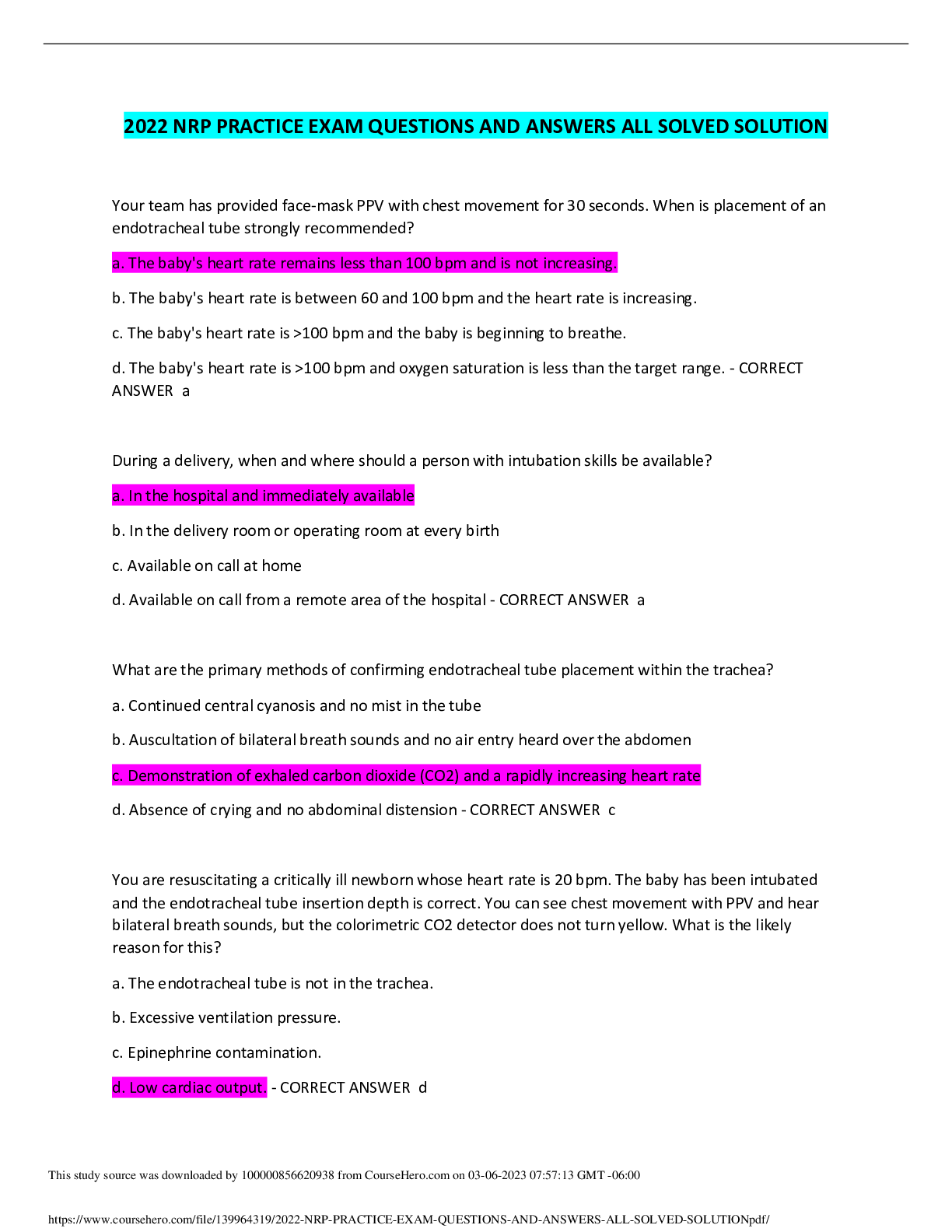
Reviews( 0 )
Document information
Connected school, study & course
About the document
Uploaded On
Apr 29, 2022
Number of pages
9
Written in
Additional information
This document has been written for:
Uploaded
Apr 29, 2022
Downloads
0
Views
111

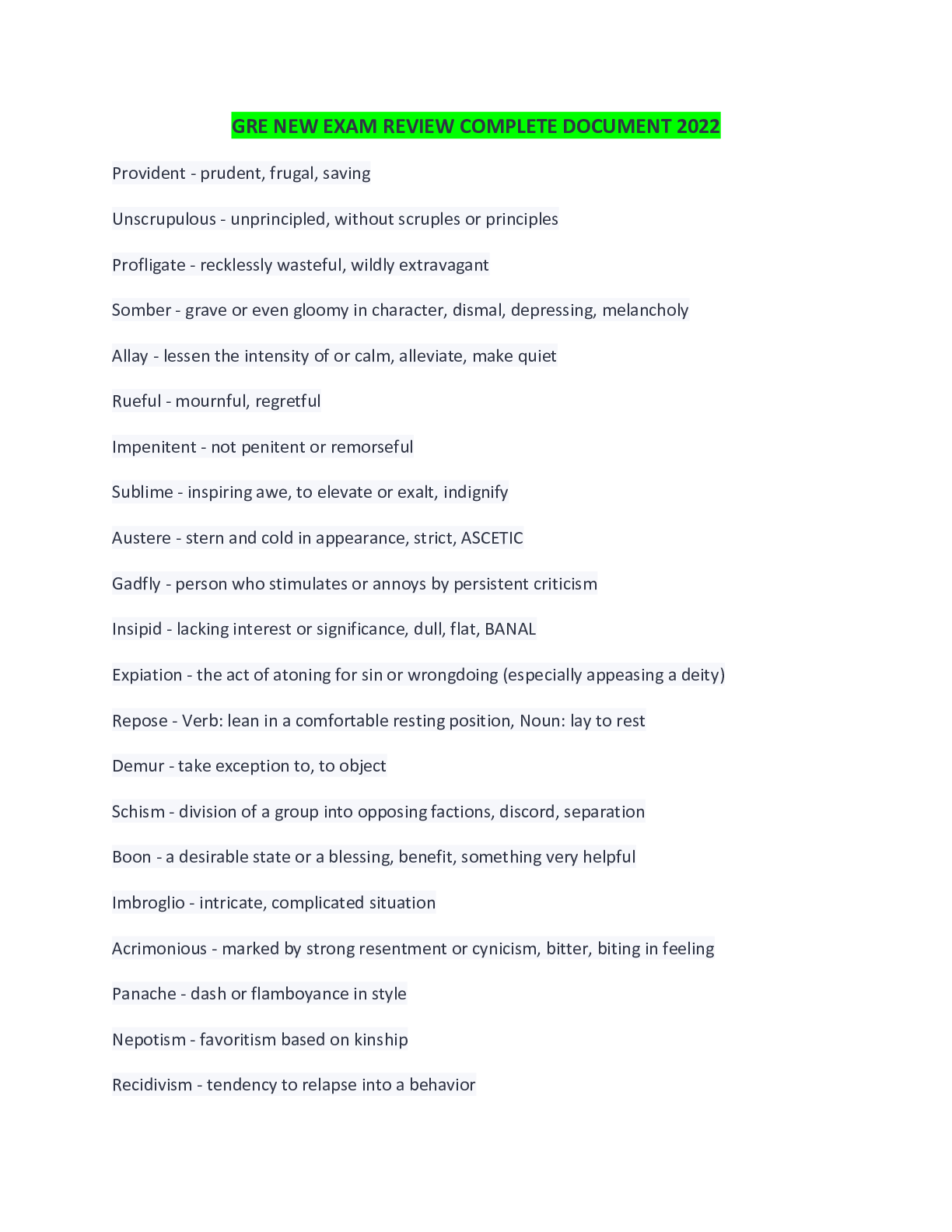
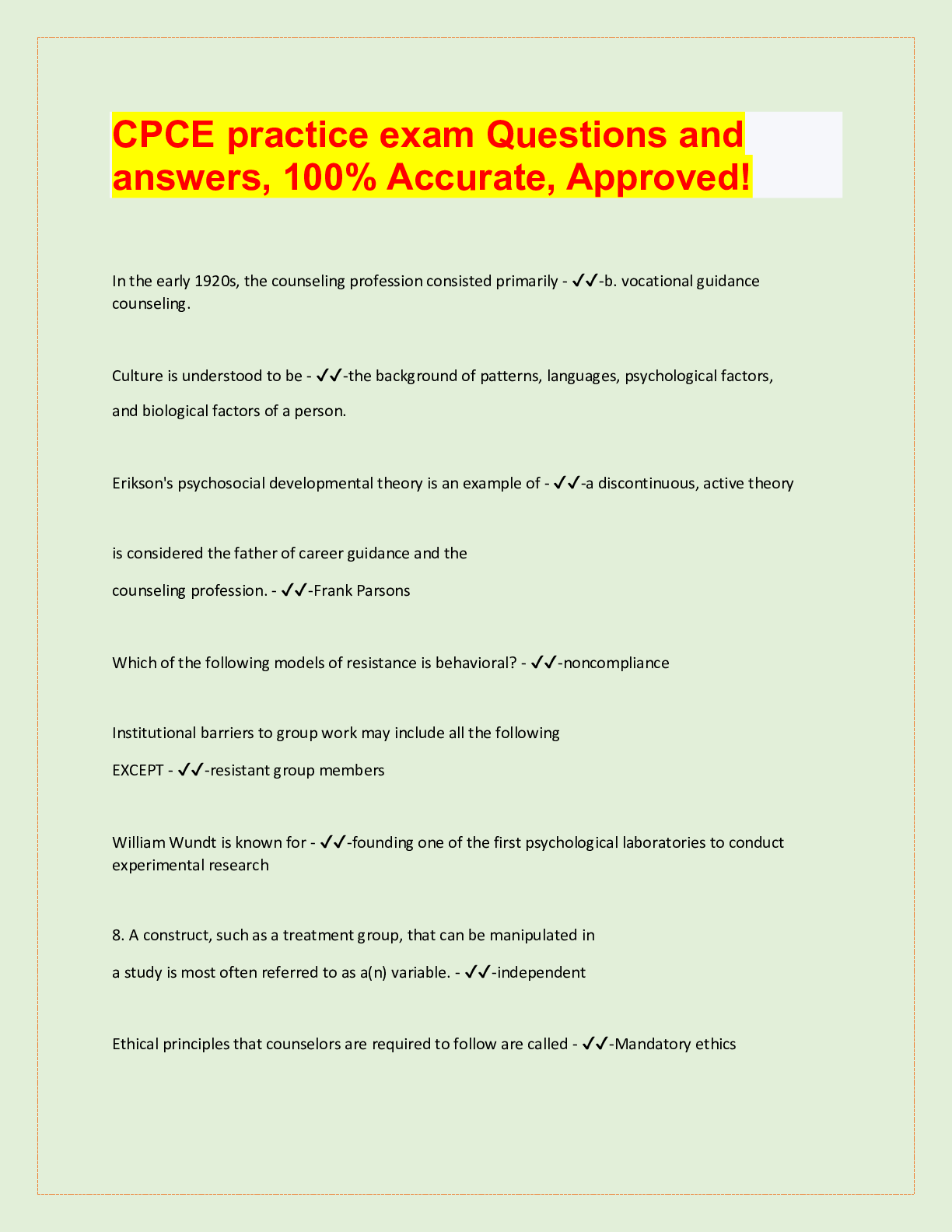
.png)

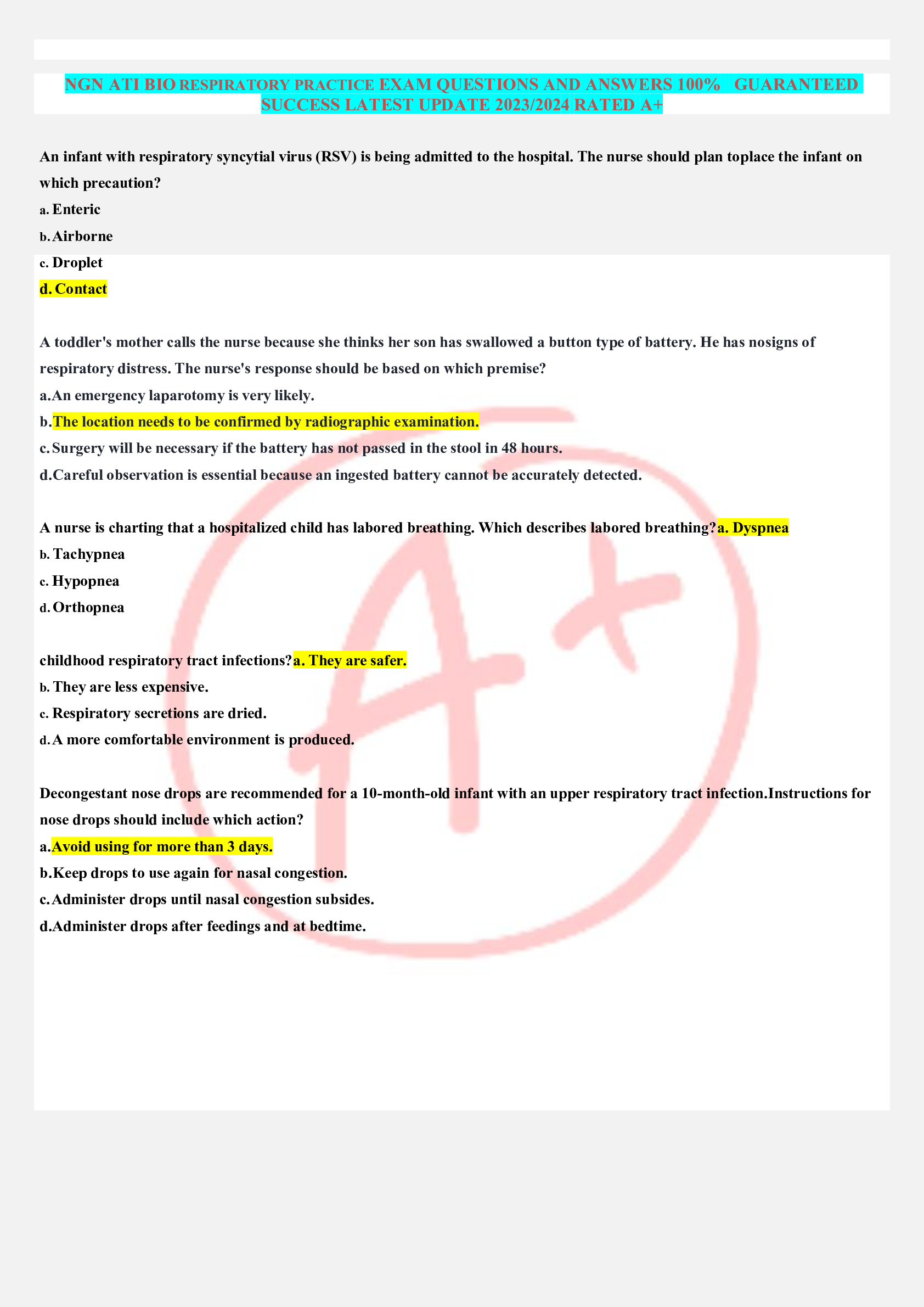

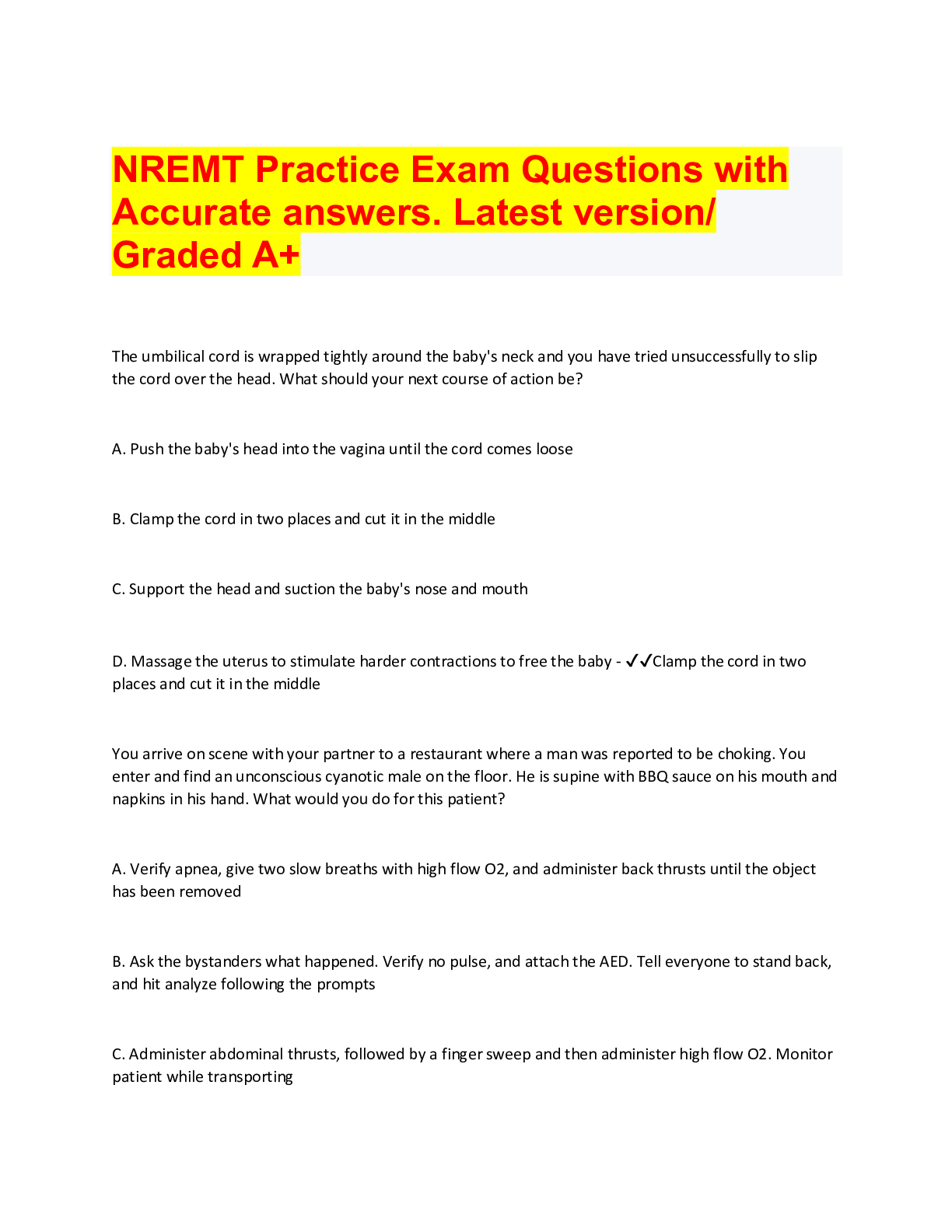
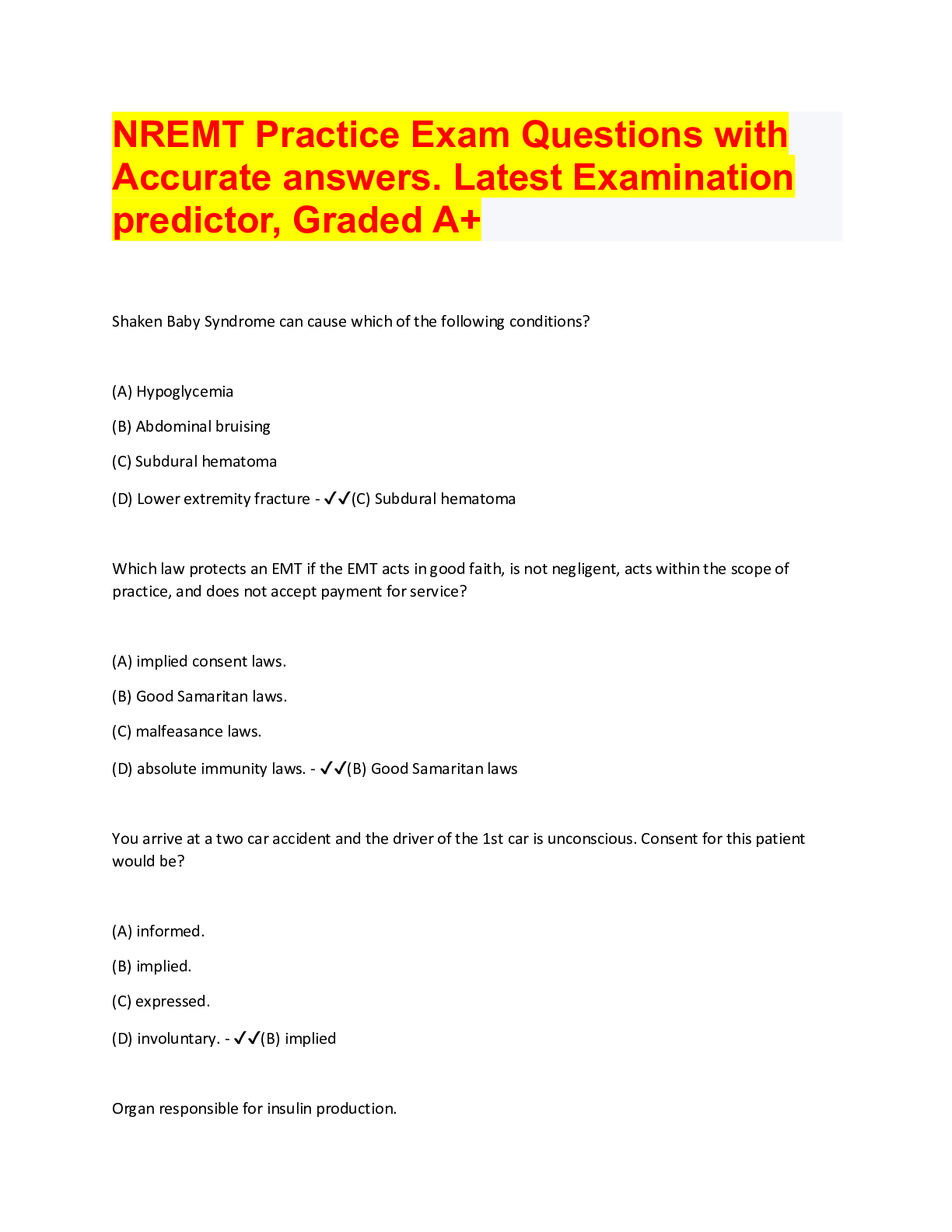
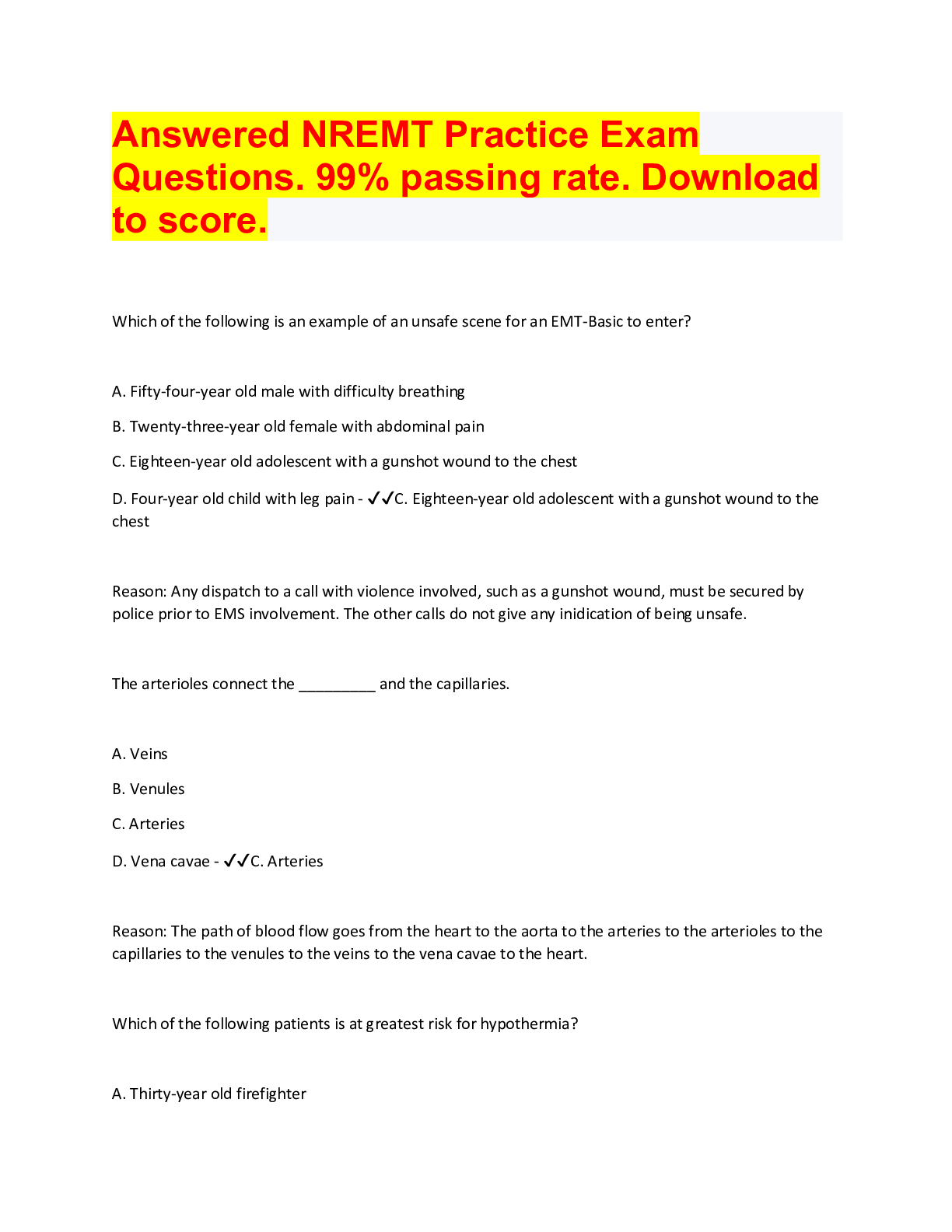
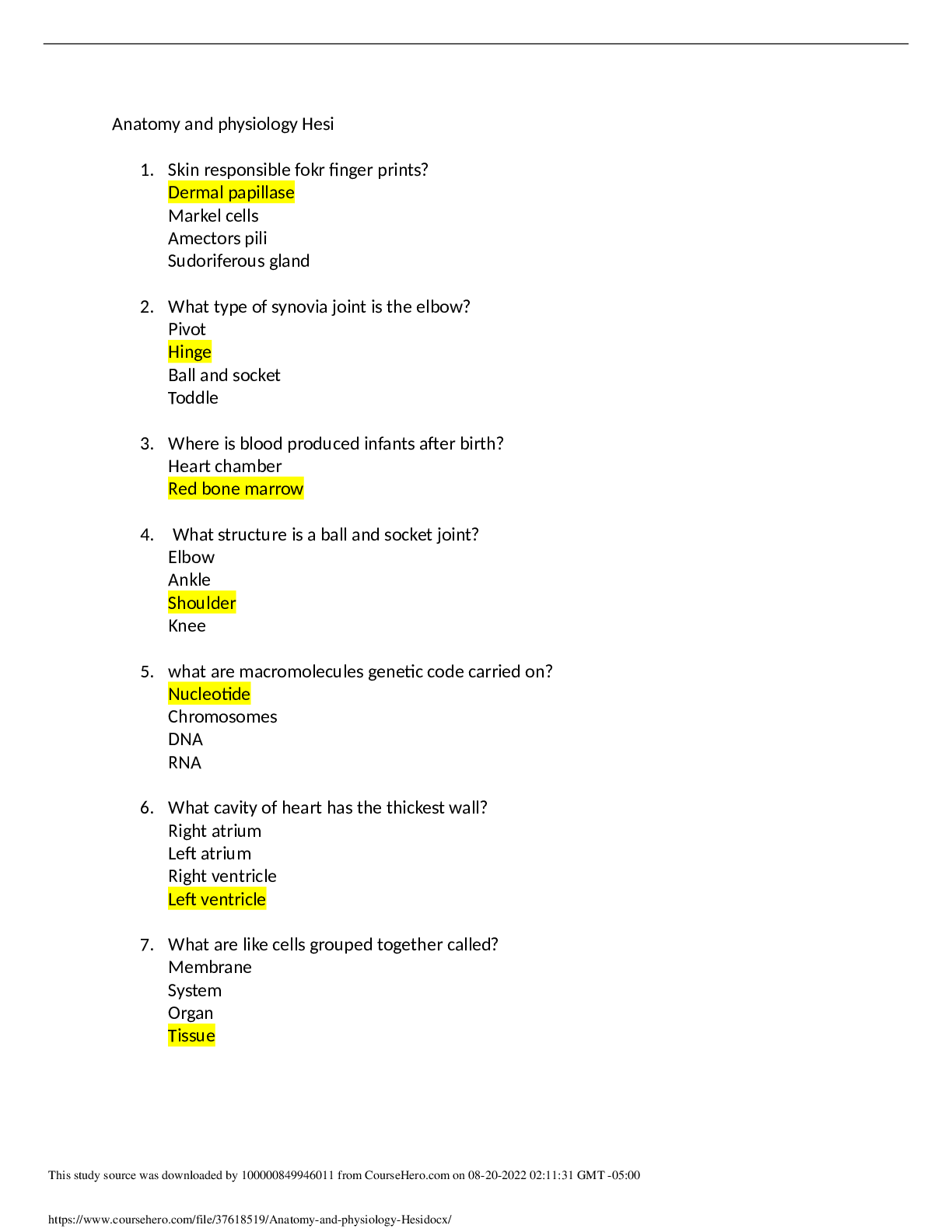
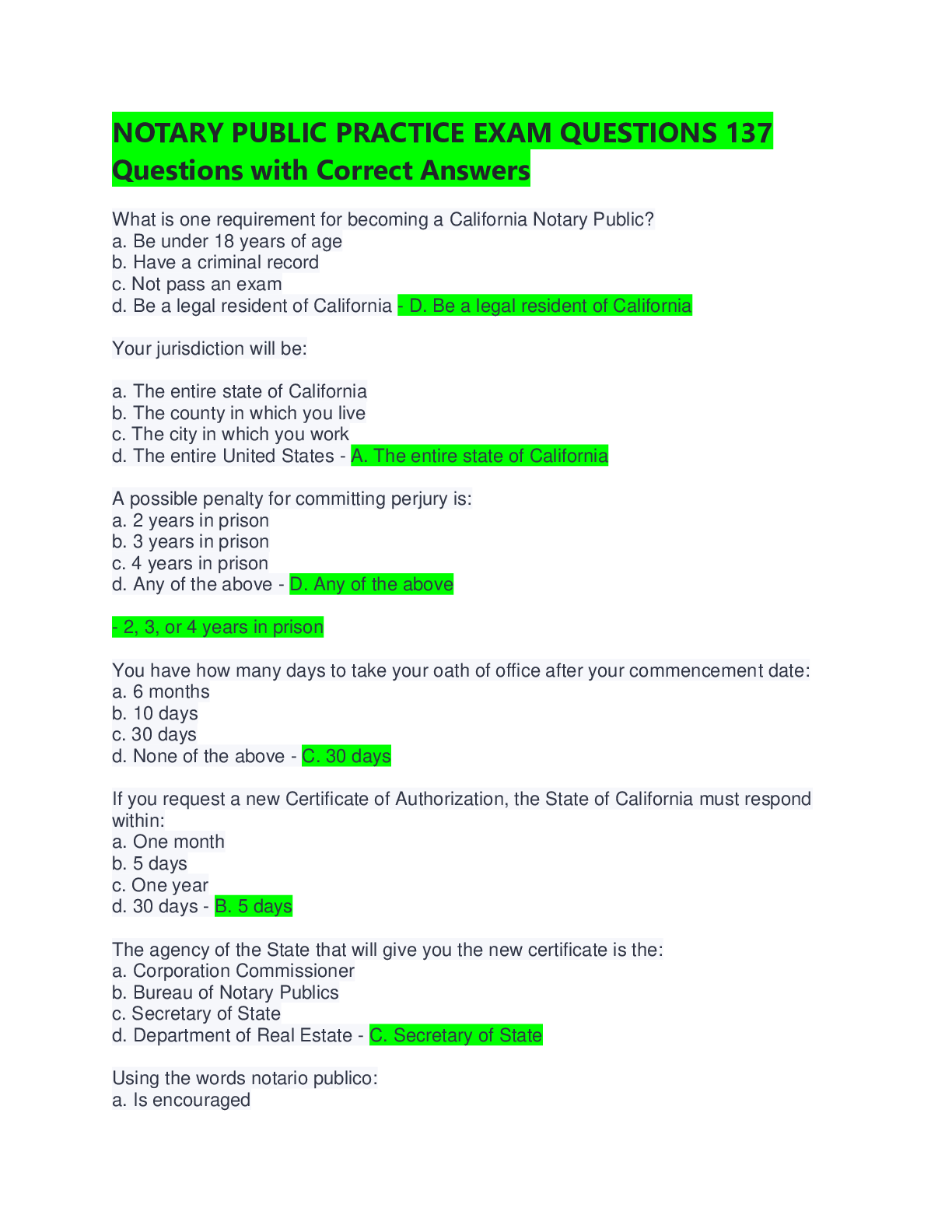
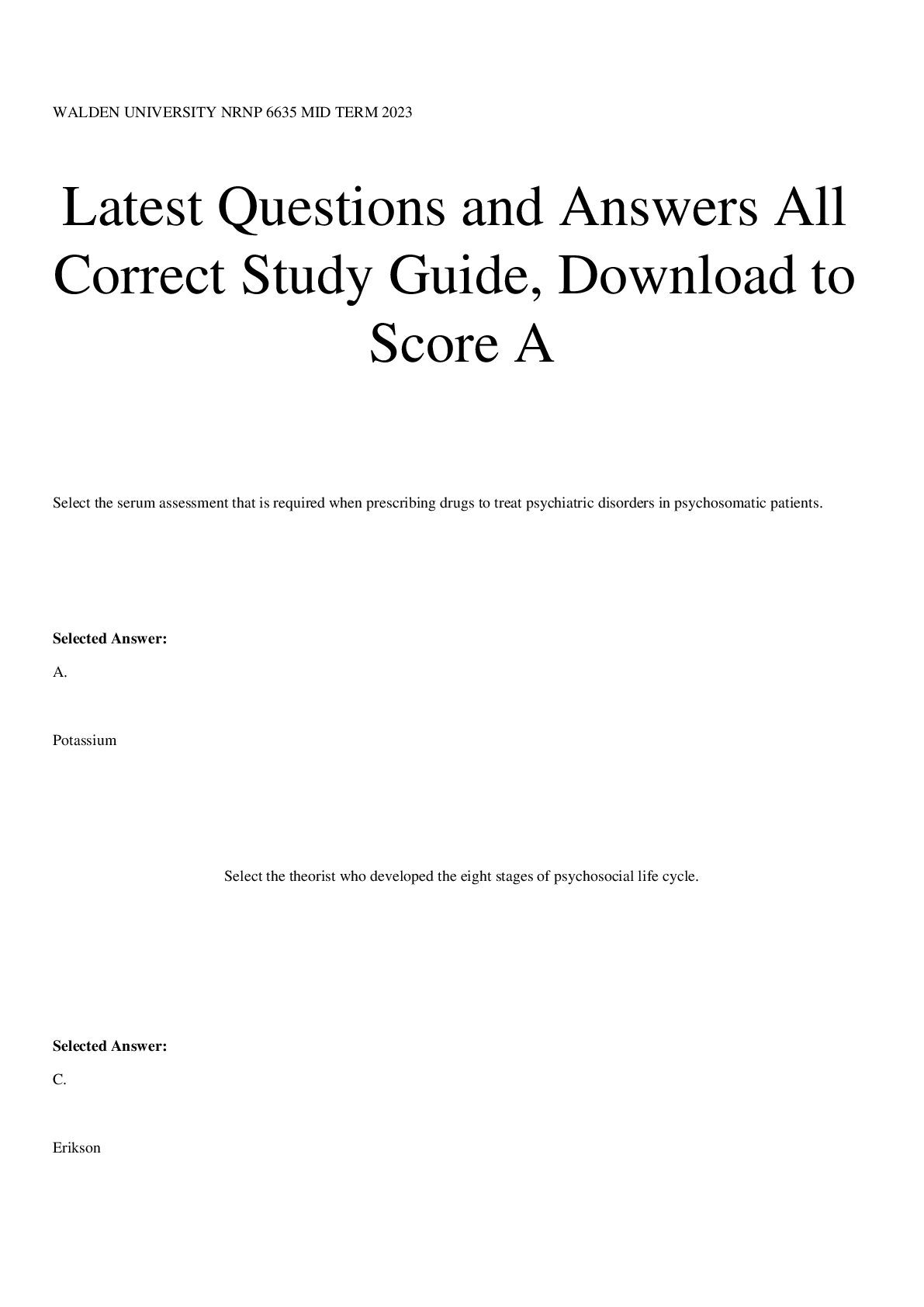
.png)
.png)
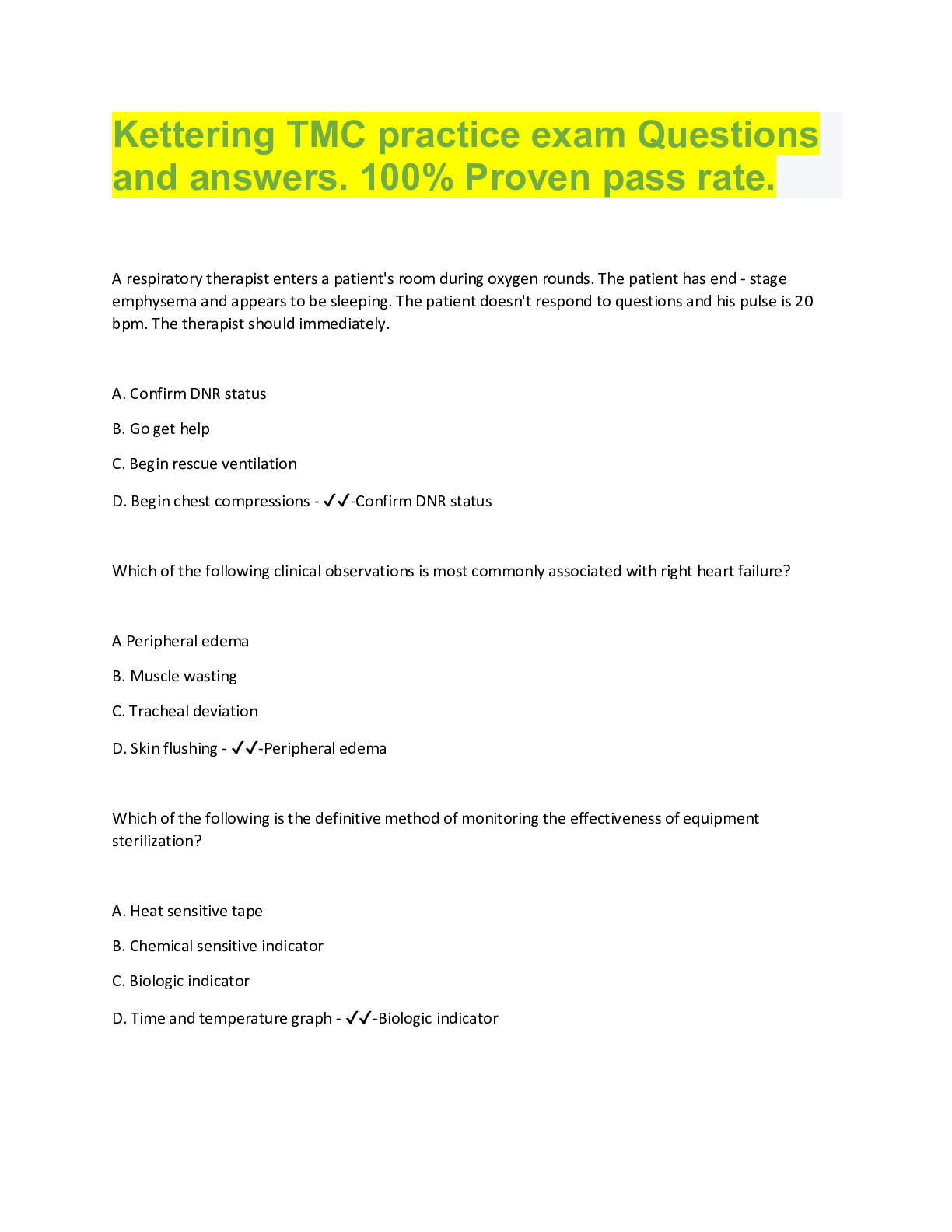
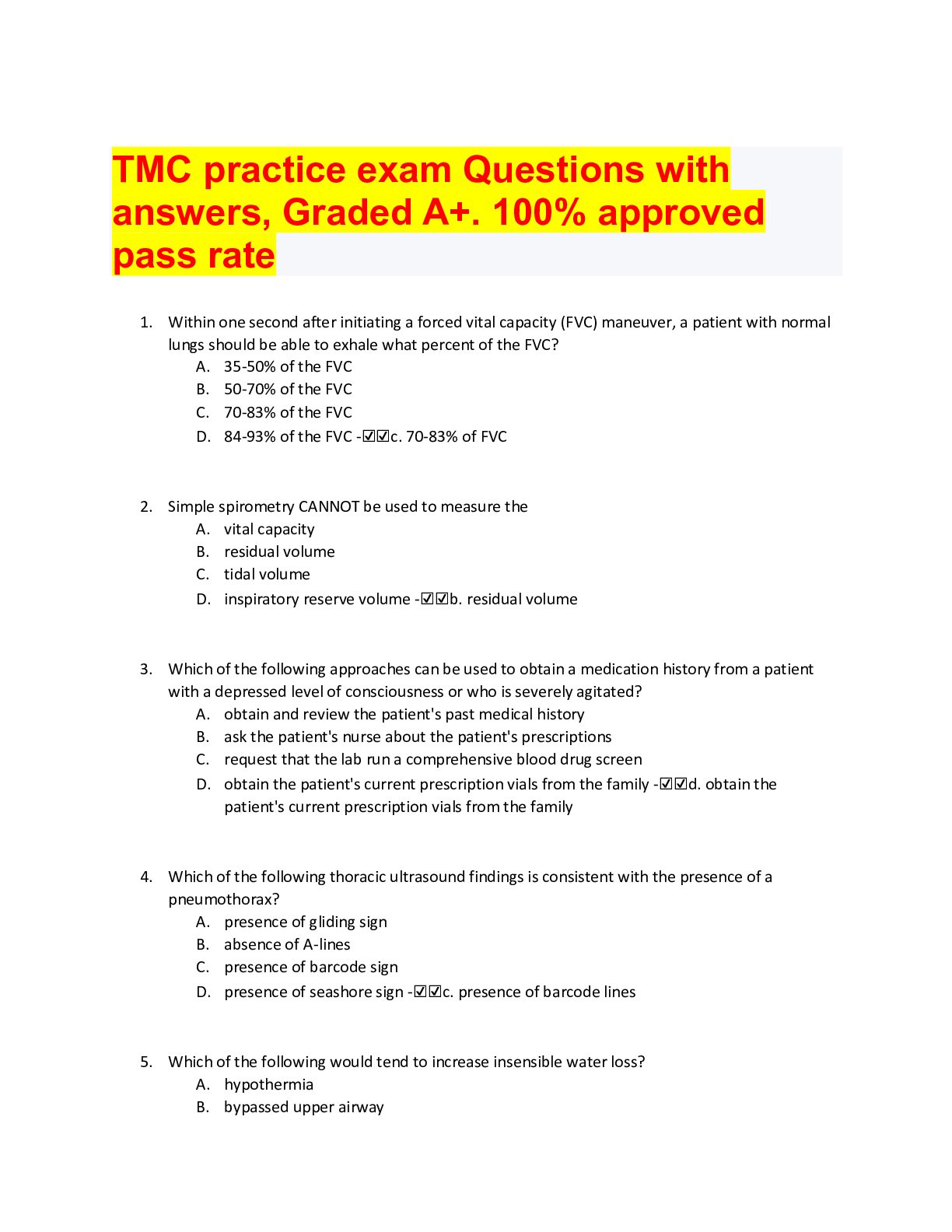
.png)
